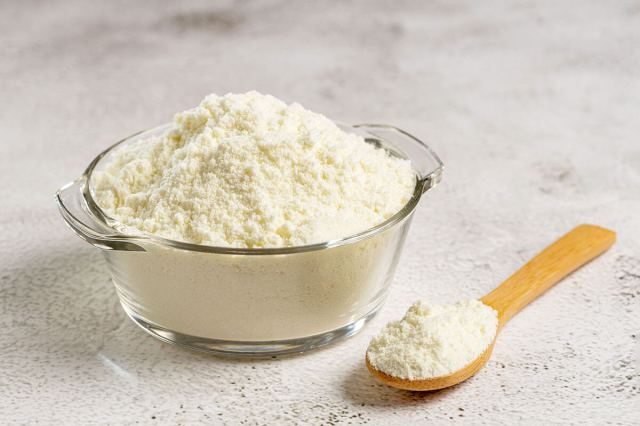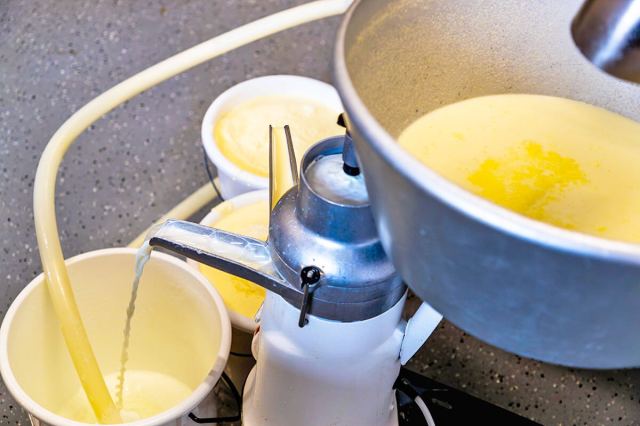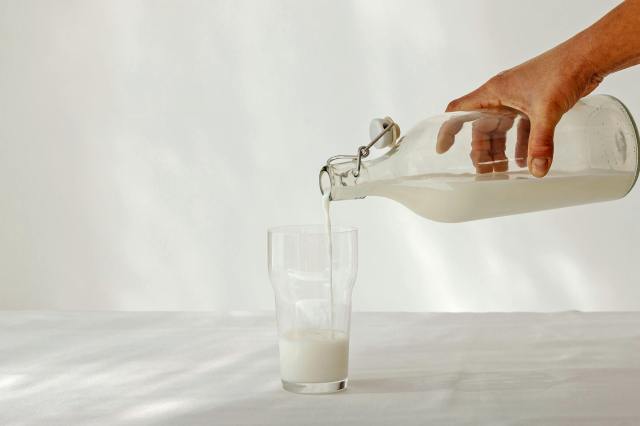It seems like there are more varieties of milk today than there are stars in the universe. Still, one of the most popular types is skim milk, which you can find almost anywhere. But despite the fact you’ve likely tried skim milk before, you may still be wondering why it’s called that and what “skim” actually means in this context. We’re here to tell you that it all has to do with how skim milk is produced, so let’s take a closer look at the etymology behind this popular variety.

What Is Skim Milk?
Skim milk is an alternative name for nonfat milk and offers the thinnest consistency of any of the most common dairy-based milks. Each cup of skim milk contains a negligible amount of fat, if any at all. Whole milk, by comparison, has a fat content of no less than 3.25%, making it a far creamier option. Then there’s reduced-fat milk — also known as 2% milk — right in the middle, with a fat content around 2%. These types are just the tip of the milky iceberg, as there are many other common varieties as well.

The History of Skim Milk
Skim milk first became widely popular during the 1980s, at a time when dieters grew far more conscious about the fatty foods and beverages they consumed. But the product was around long before then, even in the pre-World War II days. At that time, skim milk was simply a byproduct of butter production that was largely used to fatten pigs. But during World War II, demand for powdered skim milk grew as it was shelf stable and could be provided to those fighting overseas. After the war, milk manufacturers found themselves saddled with tons of leftover product, and so they came up with a plan. They successfully lobbied doctors to recommend skim milk as a healthier fat-free milk option, and public interest in this variety only grew from there.

The Etymology of Skim Milk
The term “skim milk” comes from milk manufacturers’ actual skimming process to remove the fat. Originally, this involved allowing milk to sit and let gravity work. Over time, the creamier chunks would settle at the top, allowing the manufacturer to skim the fat off the top and remove it physically. As technology evolved, so too has the skimming process.
Today, many milk manufacturers produce skim using a centrifuge, which rapidly spins and uses force to separate liquids of different densities. This results in two different byproducts — heavy cream and skimmed milk. Interestingly enough, this process occurs regardless of the desired fat content, as whole milk, 2% milk, and skim milk all undergo the same skimming procedure. This is done so that manufacturers can measure the exact amount of fat they need to add back at the very end of the production process.
Reader Favorites

Skim Milk Still Contains Vitamins
Despite the vitamin-rich fat being removed, skim milk is full of helpful vitamins that are eventually added back in, thus making it a nutrient-packed yet low-calorie option versus whole milk. Some of the vitamins added back in include vitamins A and D, both of which provide calcium to keep your bones strong. This may surprise you, but an average cup of skim milk contains around 325 mg of calcium, which is actually 19 mg more than the same measure of whole milk. Skim milk also has around the same amount of protein per cup as whole milk, which provides essential energy to the body.
More From Our Network
Better Report is part of Inbox Studio, which publishes content that uplifts, informs, and inspires.

















